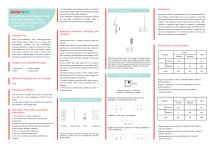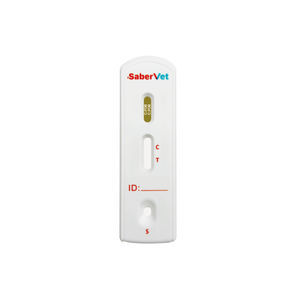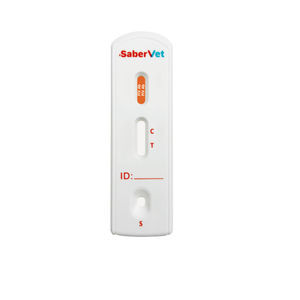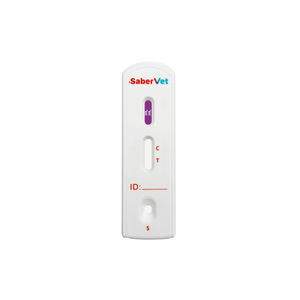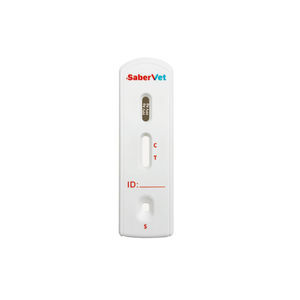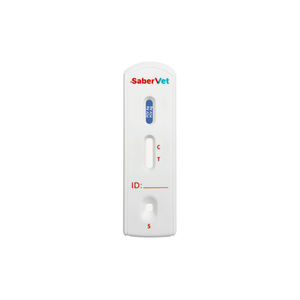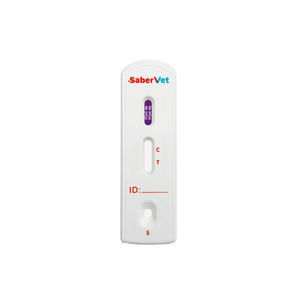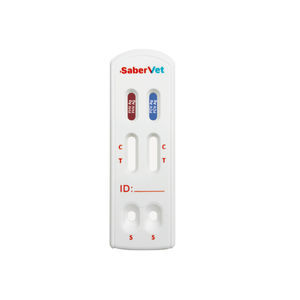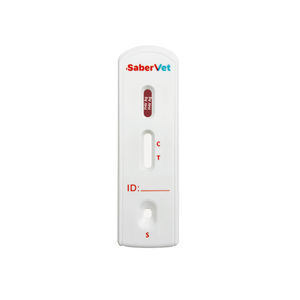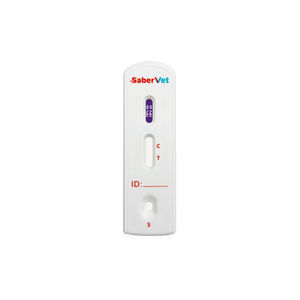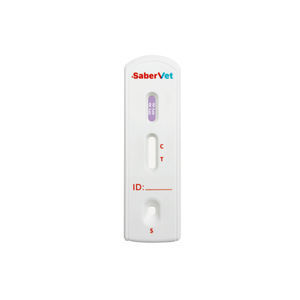
- Laboratory
- Laboratory medicine
- Rapid infectious disease test
- Hangzhou Antigenne Technology Co. Ltd
- Company
- Products
- Catalogs
- News & Trends
- Exhibitions
Rapid infectious disease test SaberVet veterinaryfor felinesblood
Add to favorites
Compare this product
fo_shop_gate_exact_title
Characteristics
- Applications
- for infectious diseases
- Application field
- veterinary
- Patient type
- for felines
- Sample type
- blood, serum, whole blood, biological
- Analysis mode
- immunoassay, lateral flow
- Format
- cassette
Description
SaberVet Feline Anaplasma Antibody Rapid Test offered by Antigenne is a lateral flow immunoassay intended for the qualitative detection of specific antibody from feline anaplasma (F.ANA) in feline serum, plasma or whole blood samples. The test is useful for determination of F.ANA infection.
Description
Border disease is also known as anaplasmosis, anaplasmosis has almost no cell plasma, is a dense, homogeneous, round structure, with a diameter of 0.3~1.0 μm, and can be parasitized on erythrocytes, platelets, and neutrophils of animals and humans, such as cows, sheep, dogs, cats, deer, and so on.
1.Clinical symptoms
Infected cats cause the onset of clinical manifestations of high fever (39.5 ℃), shortness of breath, lung respiratory tone enhancement, eye discharge, checking the skin found to have been damaged by tick wounds. It can also cause thrombocytopenia, enlarged lymph nodes, weight loss and blood abnormalities.
2.Transmission pathways
There are two main ways of transmission: one is the biological transmission of ticks and blood-sucking insects, of which male ticks are the main ones; the other is the mechanical transmission of other blood-sucking insects such as gadflies, stable flies, mosquitoes, and blood pollutants containing the insect bodies.
3.Clinical Diagnosis
There are several clinical diagnostic methods for this disease. Kiemsa staining microscopy method: observe the plasma-free bodies in the red blood cells through microscope, but the detection rate is low, and the invasion rate needs to be more than 0.5% in order to make a positive diagnosis.
Exhibitions
Meet this supplier at the following exhibition(s):

Other Hangzhou Antigenne Technology Co. Ltd products
Feline
Related Searches
- Blood rapid diagnostic test
- Rapid lateral flow test
- Immunoassay rapid diagnostic test
- Cassette rapid diagnostic test
- Virus rapid diagnostic test
- Serum rapid diagnostic test
- Plasma rapid diagnostic test
- Infectious disease rapid diagnostic test
- Whole blood rapid diagnostic test
- Rapid respiratory infection test
- Urine rapid screening test
- Bacteria rapid diagnostic test
- Rapid feces test
- Clinical rapid diagnostic test
- Nasal rapid diagnostic test
- Obstetrical/gynecological rapid test
- Rapid oral flu test
- Dog rapid test
- Laboratory rapid diagnostic test
- Coronavirus rapid diagnostic test
*Prices are pre-tax. They exclude delivery charges and customs duties and do not include additional charges for installation or activation options. Prices are indicative only and may vary by country, with changes to the cost of raw materials and exchange rates.


